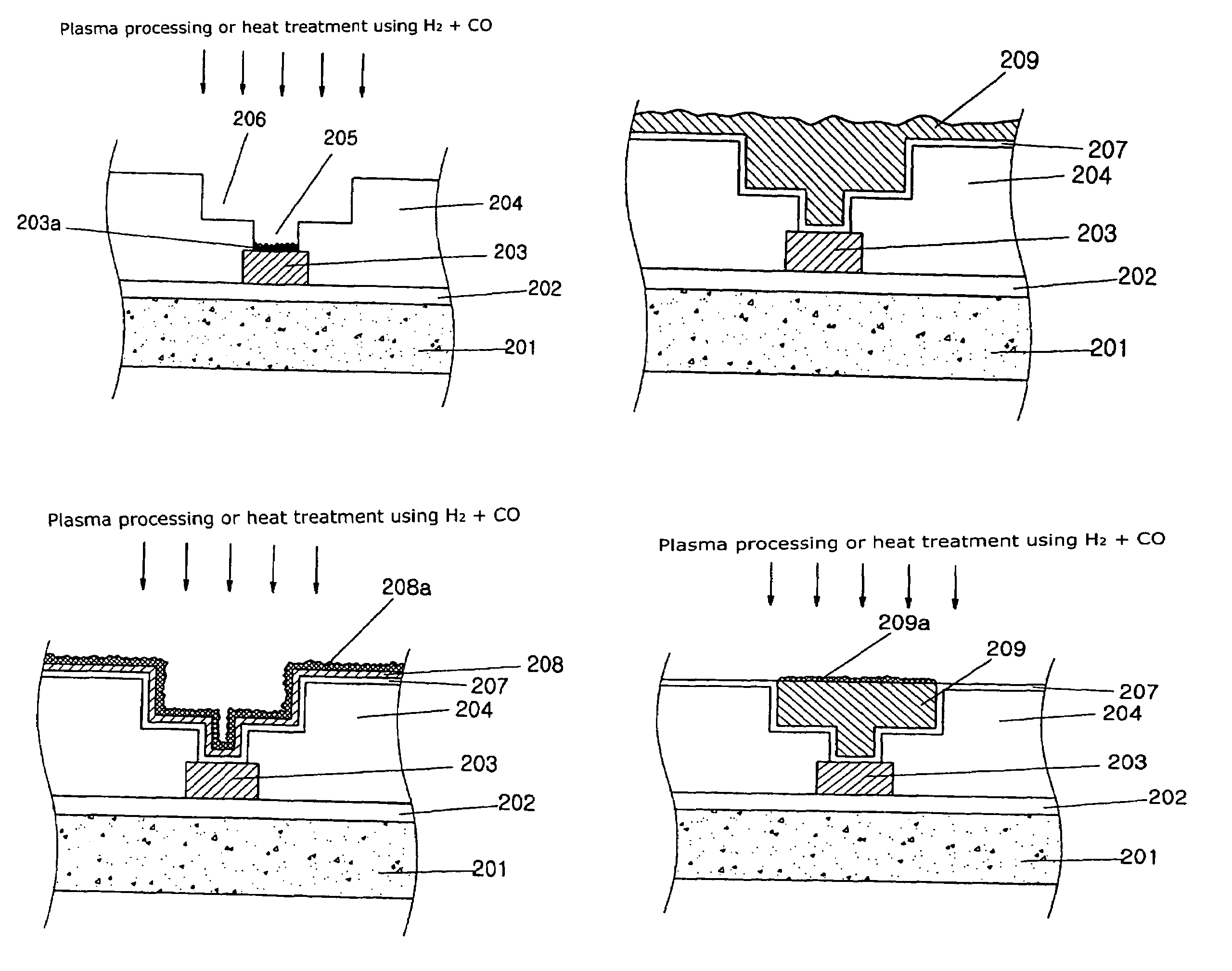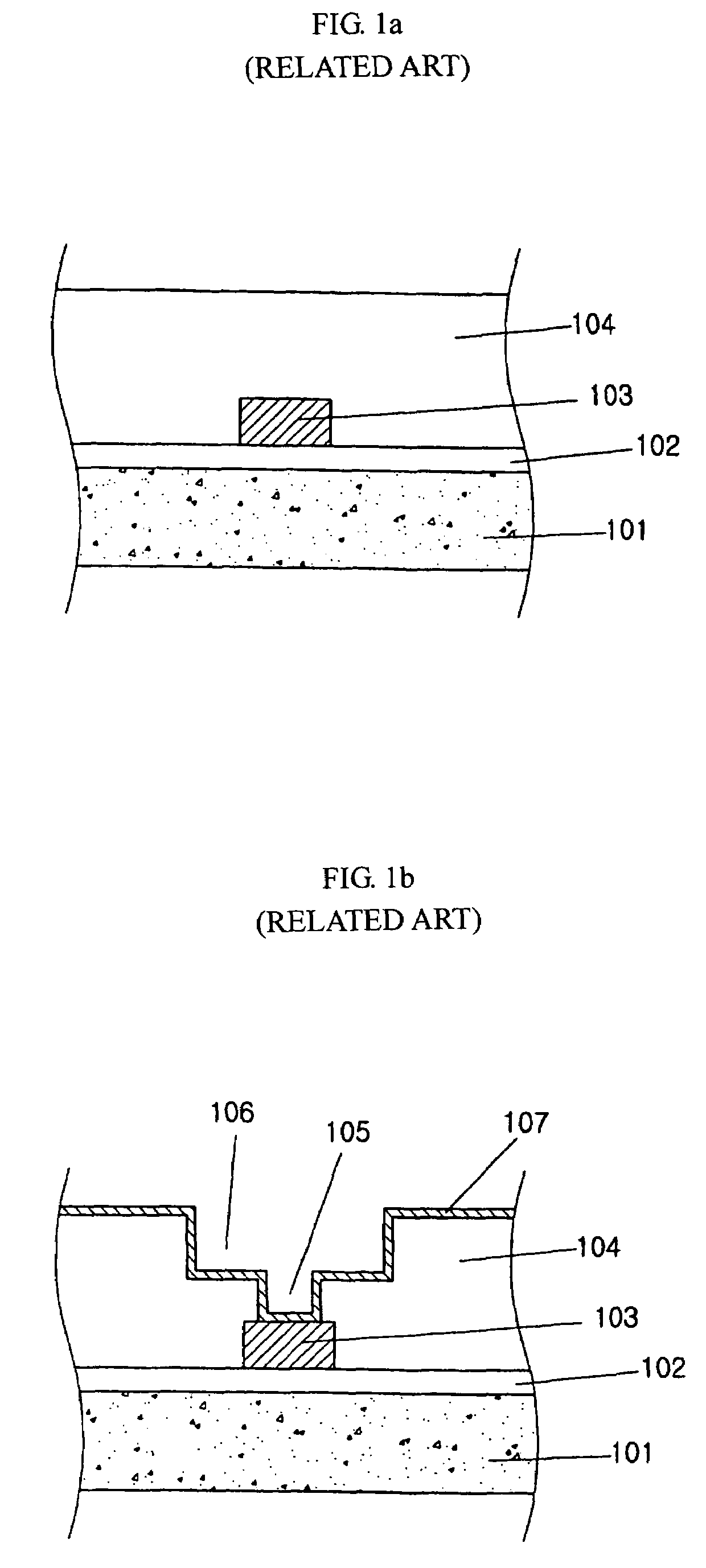Method of manufacturing a semiconductor device without oxidized copper layer
a technology of oxidized copper and semiconductors, applied in the direction of semiconductor devices, basic electric elements, electrical appliances, etc., can solve the problems of low yield rate, copper oxide layer (cuo) (i.e., natural oxide layer) formation on the copper layer, etc., and achieve the effect of eliminating
- Summary
- Abstract
- Description
- Claims
- Application Information
AI Technical Summary
Benefits of technology
Problems solved by technology
Method used
Image
Examples
Embodiment Construction
[0024]Hereinafter, a preferred embodiment of the present invention will be described with reference to FIGS. 2a to 2d, which illustrate a method of manufacturing a semiconductor device.
[0025]As shown in FIG. 2a, a first insulating layer 202 is deposited on a semiconductor substrate 201 by a chemical vapor deposition (CVD) process. Herein, the semiconductor substrate 201 can be a semiconductor substrate with an impurity region (not shown), or a lower conductive line. A lower metal layer is then formed on the first insulating layer 202. This can be performed by a sputtering method, etc. The lower metal layer is selectively patterned to form a first conductive line 203 using photolithography and etching. Herein, the lower metal layer can be composed of copper.
[0026]A second insulating layer 204 is then deposited on the first insulating layer 202 and the first conductive line 203. The second insulating layer 204 can be composed of a Tetra Ethyl OrthoSilicate (TEOS) and a Spin On Glass (...
PUM
 Login to View More
Login to View More Abstract
Description
Claims
Application Information
 Login to View More
Login to View More - R&D
- Intellectual Property
- Life Sciences
- Materials
- Tech Scout
- Unparalleled Data Quality
- Higher Quality Content
- 60% Fewer Hallucinations
Browse by: Latest US Patents, China's latest patents, Technical Efficacy Thesaurus, Application Domain, Technology Topic, Popular Technical Reports.
© 2025 PatSnap. All rights reserved.Legal|Privacy policy|Modern Slavery Act Transparency Statement|Sitemap|About US| Contact US: help@patsnap.com



